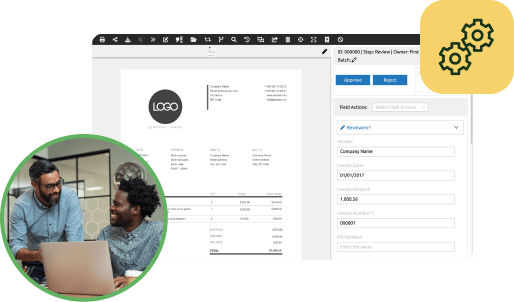What needs to be part of the invoice approval process, and why it matters
As we continue our tour through the procurement cycle, we come to a fork in the road: should we approve the invoice for payment, or not? So far, we’ve successfully identified a need for a product or service, approved the spend, secured a vendor and price , issued a purchase order, and the product has arrived at our warehouse. When we receive the vendor invoice, what are the best processes for determining if it’s accurate and should be approved for payment? Here we look at what needs to be part of the invoice approval process, and why it matters.
What to look for
An invoice may arrive with the product, or it may arrive at a later date, but when it does, it needs to be carefully compared to the original purchase order and to the receiving document to ensure that what is being billed for was actually contracted for and received. Once approved, the invoice must make its way to the payables department for payment processing.
If the approval process was as easy as confirming the goods were received, then the purchase order receipt itself should be sufficient evidence that an invoice can be paid, but there are other factors to consider, including:
- Is the invoice billing only for items actually received?
- Do the payment terms match the agreed upon terms?
- Are any negotiated discounts included?
- Is the invoice coded to the correct expense accounts?
- Are there any warranty or performance issues with the product/service post receipt that warrant holding payment?
To ensure accuracy, accounts payable invoices should go through both a matching and an approval process.
It’s a match: two and three-way invoice matching
Invoice matching is the process of matching billed/invoiced items to the original purchase order to ensure that the vendor has invoiced correctly for the goods or services you ordered. The matching process may involve matching a single invoice to multiple purchase order shipments, or multiple invoices to a single purchase order shipment.
A 2017 Aberdeen Group study, Best-in-Class Invoice Processing Capabilities found that Best-in-Class AP organizations are three-times as likely to match invoices to PO line-level details. The regular use of invoice matching really requires that a company utilize an electronic procurement solution, since trying to perform this task manually might actually cost more in time spent than any savings generated.
Companies might utilize both two- and three-way matching techniques, depending upon the dollar value of the purchase, or the nature of the product/service, for example. In a two-way matching process, the quantity and amount on the invoice is matched to the quantity and amount on the corresponding PO. In a three-way matching process, an invoice is matched to the corresponding purchase order for quantity and amount, and also to the receiving information documented at the time the goods were received.
When a discrepancy is found, the invoice is flagged for follow-up, and routed to an appropriate reviewer. It makes sense to establish tolerances for variances in both cost and quantity, to avoid spending hours tracking down just a few cents of savings.
Approval routing
The invoice approval routing process involves routing the invoice from approver to approver until final approval is received. For many companies, this is a manual process, full of paper shuffling and delays. The Aberdeen Group study found that the top pressure noted by survey respondents was difficulty locating and managing paper-based documents, so it makes smart sense to automate the approval process and eliminate the paper.
The invoice approval routing process will vary from company to company, of course, and it may also vary by vendor, department, requester, product type, and invoice amount. For instance, the purchasing department or the person who placed the order might have to approve an invoice to confirm the vendor’s billing is accurate. And just before payment is disbursed, a manager or CFO, might have to give it a final approval to ensure that the correct amount is paid and posted to the right general ledger accounts.
In addition to boosting efficiency and accuracy, a big advantage of automating the approval process is that it creates an audit trail showing precisely where in the approval cycle a particular invoice is, where it’s been, and who still needs to review it.
Vendor self-service
An effective way to further automate the payables process is to enable vendors to submit their invoices electronically through what’s often called vendor self-service, or a vendor portal. This eliminates the need to rekey the invoice into the procurement software, jump-starting the entire approval and payment process. Vendor self-service portals have other benefits as well, including the ability for vendors to maintain their own contact information and respond to Requests-for-Quote (RFQ).
Advantages of doing it right
Automating the accounts payable invoice processing cycle as part of a larger eProcurement initiative delivers advantages in time and cost savings, and keeps the process accurate, consistent, and compliant with best business practices.
- Identify and resolve bottlenecks — easily see where an approval is stalled, and send automatic reminders to keep process on track.
- Speed and streamline processing — using automation instead of human labor to approve and pay invoices saves precious resources and allows companies to process a higher volume of invoices without increasing staff.
- Strengthen and reinforce best practices — establish workflows that match the business rules that matter.
- Lower invoice processing costs — in that same Aberdeen study, Best-in-Class companies cut their invoice processing costs in half through automating the AP process.
- Capture early payment discounts — by speeding the invoice handling process, companies are in a better position to take advantage of vendor discounts.
- Avoid late payment penalties — ensuring the approval process keeps moving means invoices are approved and paid according to terms.






